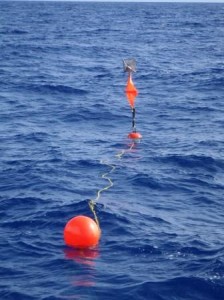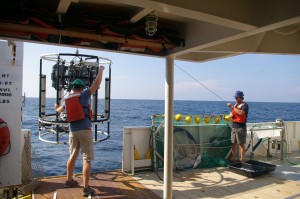 Once more, three months have passed in our ongoing series, 365 days of Darwin. For new readers, our favorite stuffed Charles Darwin doll is spending a year traveling around the world and updating us all on his adventures, daily. The last three months, Charlie has traveled farther than ever before. You can checkup on his first sixth months here: 365 days of Darwin: The first 3 months and here: 365 days of Darwin: The second 3 months. Check below the fold for a summary of his most recent 3 months. The adventure continues!
Once more, three months have passed in our ongoing series, 365 days of Darwin. For new readers, our favorite stuffed Charles Darwin doll is spending a year traveling around the world and updating us all on his adventures, daily. The last three months, Charlie has traveled farther than ever before. You can checkup on his first sixth months here: 365 days of Darwin: The first 3 months and here: 365 days of Darwin: The second 3 months. Check below the fold for a summary of his most recent 3 months. The adventure continues!
Tag: Sargasso Sea

My day began with a balancing contest on the stern deck – who could stand on one foot the longest? It was an official welcoming to the world of those with sea legs. The rest of the day blended in with yesterday, when we ran our second diel experiment – nothing new there from the science end.
We pulled up our incubation/grazing experiment to look at the effect of grazers. We had dropped 96 bottles, each a different manipulated community, overboard. Turns out something got hungry and took a bite of the net bag that was holding the bottles underwater. We’d like to think shark, but that’s entirely our imaginations run wild. We spent the entirety of the day after lunch filling up large plastic carboys with water from the Sargasso – a prized medium for phytoplankton researchers. The water out here, though a classic mix of sea elements is very “clean”, meaning it has extremely low levels of organic matter, trace metals, or really any nutrients at all. It’s what makes the waters out here such a beautiful blue and is the reason we haven’t seen much life outside of the phytoplankton in our tubes the entire trip.

 A stormy beginning makes for a busy end. We spent the day prepping for a couple of experiments that will happen tomorrow while we’re all awake for the second round of the diel experiment. We sent a go-flow, typically used to collect data on trace minerals in the water, overboard to gracefully collect and filter seawater to be used for growth medium in an incubation experiment. It’s hard to think about treating seawater nicely, but apparently the go-flow apparatus is designed to not split any cells upon entry or exit. This ensures that the phytoplankton we’re trying to grow and measure will have the most realistic experience in their little containers as possible tomorrow.
A stormy beginning makes for a busy end. We spent the day prepping for a couple of experiments that will happen tomorrow while we’re all awake for the second round of the diel experiment. We sent a go-flow, typically used to collect data on trace minerals in the water, overboard to gracefully collect and filter seawater to be used for growth medium in an incubation experiment. It’s hard to think about treating seawater nicely, but apparently the go-flow apparatus is designed to not split any cells upon entry or exit. This ensures that the phytoplankton we’re trying to grow and measure will have the most realistic experience in their little containers as possible tomorrow.
 We’d all been staring at the weather forecast in disbelief for the last couple of days. We had plenty of warning it was coming, but even in the midst of a storm, I don’t believe it’s happening. Why? Because it’s sunny out. However, there are gale force winds outside causing 12-14 foot swells and rocking the boat every which way.
We’d all been staring at the weather forecast in disbelief for the last couple of days. We had plenty of warning it was coming, but even in the midst of a storm, I don’t believe it’s happening. Why? Because it’s sunny out. However, there are gale force winds outside causing 12-14 foot swells and rocking the boat every which way.
 After 6 long hours processing the phytoplankton profile from last night’s CTD, we decided to stay on this station for the remainder of our trip. The profile showed a distinct (and stable) maximum of phytoplankton. Interestingly, this maximum isn’t at the top as you might expect for sun-loving organisms.
After 6 long hours processing the phytoplankton profile from last night’s CTD, we decided to stay on this station for the remainder of our trip. The profile showed a distinct (and stable) maximum of phytoplankton. Interestingly, this maximum isn’t at the top as you might expect for sun-loving organisms.